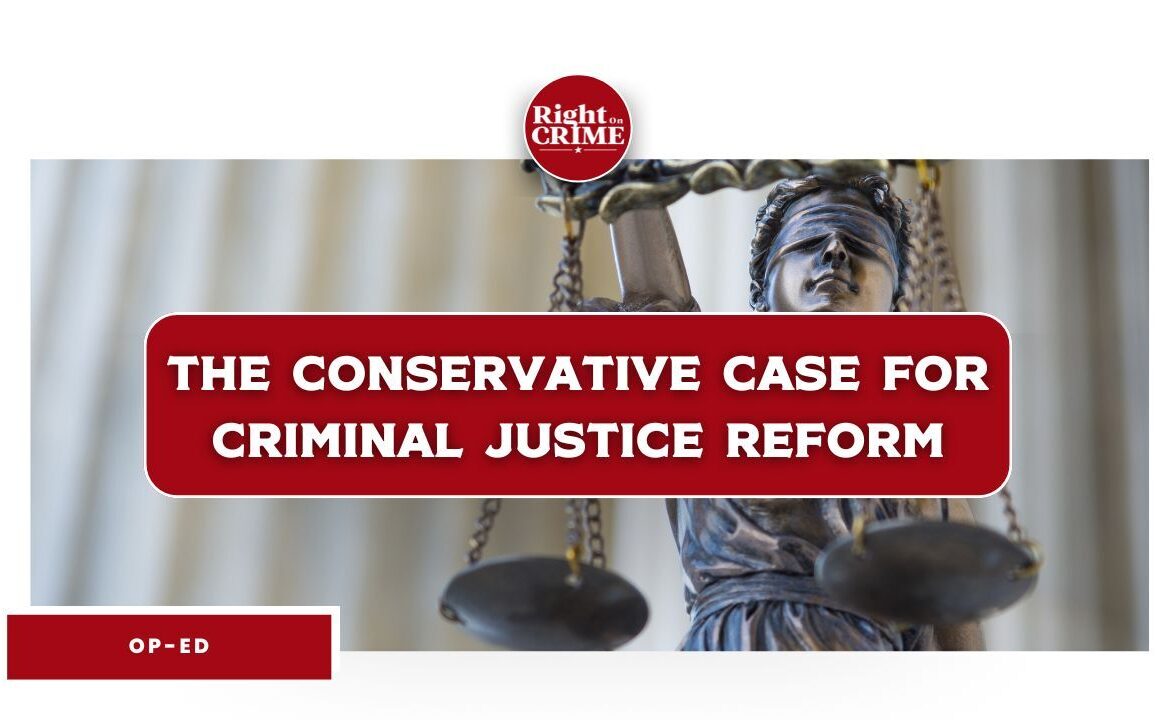
Op-ed originally published in American Habits.
The harmful effects of an underperforming, inconsistent, and bloated justice system are felt across all 50 states at every level of government.
It’s estimated that 1 in every 100 American adults is in prison or a local jail, and nearly 1 in 3 Americans has some type of criminal record. That’s because we’ve watched our criminal code expand with hundreds of thousands of federal criminal penalties with no government agency keeping track. And that doesn’t even include the growing number of state and local criminal laws.
With almost every crime, the ripple effects can ruin lives, break apart families, and destroy communities. The instinct for politicians is often an emotional, knee-jerk reaction to create tougher legislation by haphazardly creating new crimes or longer sentences, but that does not deter crime. It’s the predictability of being caught that stops a criminal, and that means we must find the resources to support law enforcement who are already stretched thin and grappling with outdated technology and policies.
When you consider that only an estimated 57.8 percent of murders and 26.9 percent of rapes nationwide are being solved and prosecuted, we can all agree that victims deserve better. And when others point to falling crime data, it’s meaningless if Americans don’t feel safe. With the pervasiveness of social media, violent crime, theft, and all types of crime feel imminent to our own families and neighborhoods.
We must hold criminals accountable. Violent criminals belong behind bars, and data shows that drug courts, mental health services, prison programming, job training, supervised parole, and other collaborative solutions address the root cause of crimes and better prepare individuals to successfully reenter society. Knowing that 95 percent of everyone incarcerated is eventually released, you must ask yourself: How do you want them to return to your neighborhood?
No matter what your politics, emotions should never drive policy decisions. Thoughtful, conservative, data-driven criminal justice solutions create sound policies that are equitable today and for generations to come. Here are a few commonsense examples:
Alternative Police Crisis-Response Models
The nation’s 9-1-1 departments receive about 240 million calls annually, with 50 million related to mental health or substance abuse crises. Since the pandemic, alternative crisis calls have surged, and 14 of the 20 largest U.S. cities now operate alternative response programs, like the one in Chapel Hill, North Carolina, which has worked successfully since 1973. The Department’s Crisis Unit pairs officers with a dedicated group of individuals in a 24-hour emergency response team, helping local citizens in times of crisis while allowing law enforcement to focus on violent crime response. Today, about 53 percent of North Carolina police departments have some type of co-response program without draining traditional resources. These departments seek private grants, nonprofit partnerships, and government funding to support implementation efforts and trained staff, and many departments also partner with local universities to help cover costs.
Building Stronger Communities by Supporting Second-Chance Hiring
On average, more than 40 percent of released offenders return to prison within three years of release, and in some states, recidivism rates are closer to 60 percent. Breaking the cycle of crime and turning lawbreakers into law-abiding citizens is a conservative priority because it advances public safety while preventing future victims. Empowering private businesses to participate in second chance hiring promotes the free market’s role in public safety while advocating the removal of arbitrary regulations. Second chance hiring also opens employers to an entire labor market they may have never considered, strengthening economies and reducing crime. The U.S. Chamber of Commerce and its America Works Initiative support public-private partnerships to address recidivism through employment. Chambers like the North Carolina Chamber offer resources for employers interested in second chance hiring. Right On Crime offers its Employer Handbook to assist employers in making informed decisions while considering federal tax breaks and other business-centric incentives.
Family Preservation Through Caregiver Mitigation and Diversion Programming
The family unit is the foundation of society. Instead of tearing families apart and creating generations of criminals, our criminal justice system must harness the power of charities, faith-based groups, and other community partners to reform offenders and support and preserve families. When parents are incarcerated, research shows that children’s health, education, employment prospects, and their entire quality of life are adversely impacted. That’s why it’s imperative we consider adopting mitigation laws that divert parents who commit nonviolent, minor offenses into programs that allow them to remain home with their children while serving their sentences. States like Tennessee, Missouri, and Illinois have introduced caregiver diversion and mitigation laws to keep parents closer to their families.
For far too long, we have heard a single narrative on criminal justice, and that must change. It’s time to work together to create a justice system that is run by the people, for the people. This means taking violent and career criminals off our streets while supporting innovative and conservative solutions to create job-ready, taxpaying citizens upon release.
It’s up to Americans to cut the red tape, mobilize private businesses, integrate faith-based partners, and support stronger families and communities. When overcriminalization is at the forefront, the criminal justice system is simply compounding quantity when instead, we should focus on quality — quality of life and liberty, familial strength and prosperity, and ultimately, public safety.
This post was originally published on this site be sure to check out more of their content.







